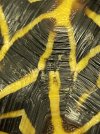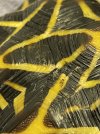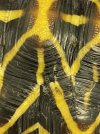You are using an out of date browser. It may not display this or other websites correctly.
You should upgrade or use an alternative browser.
You should upgrade or use an alternative browser.
Is this shell rot?
- Thread starter Zezima
- Start date
Shell rot is a fungal infection of the plastron. Most species are highly resistant to it. It is usually only seen with red or yellow foot tortoises that are kept on wet substrate.
I don't know what would be the cause of the mark on your tortoise's shell. Sometimes they just get weird things like that.
I don't know what would be the cause of the mark on your tortoise's shell. Sometimes they just get weird things like that.
Zezima
Member
Thankyou Tom I was just a little worried and thought stars could get shell rot
It is physically possible for a star, sulcata, leopard, or other species to get shell rot, but they have to be basically living in a wet cesspool for days or weeks straight with no drying out. Sulcatas or leopards can poop in their night boxes and make a muddy poopy mess and sleep in it every night, and it does nothing as long as they come out and walk around in the dry air daily. Same with stars, though they seldom make such a mess of their night boxes like my leopards do.Thankyou Tom I was just a little worried and thought stars could get shell rot
I've asked several reptile vets if they had ever seen a case of shell rot in a leopard or sulcata, and most said no, but two different vets had each seen one case. Case number one was a sulcata sleeping outside in the cold in an AZ winter and a sewage pipe busted and flooded the sleeping area without the owner knowing. The tortoise laid in the wet sewage for weeks in cold temps and the shell rot was minor and easily treated by simply cleaning up the mess and letting it dry out. The other case was a leopard that had been severely chewed on by a dog, and there was a presumed bacterial infection on the plastron as a result. This was technically "shell rot", but not the usual type we tortoise keepers refer to.
No tortoise should be kept on constantly wet poopy substrate, but even in the neglect/abuse cases where this happens, there is almost never any shell rot. Having said that, redfoots are a different story... They get it easily and regularly if the substrate is just a little too damp for a little too long.
Similar threads
- Replies
- 2
- Views
- 2K


